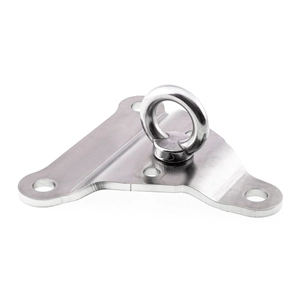Point anchor is a term used in fall protection systems to describe a point of attachment for a fall arrest system. It is an integral part of a fall protection system and a vital piece of equipment for anyone working on roofs or other elevated surfaces.
Anchor points can be beneficial if your work site is temporary or your workers must cover lots of ground. They are usually found at the top or on the side of a building and serve as a secure and safe connection point to a solid structure.
Anchor points can be permanent or temporary and come in different shapes and sizes depending on the type of work being done. Fixed anchor points have to be chosen carefully because they are not one-size-fits-all.
They should be placed on stable structures above the site of construction. Anchorage points for fall restraint can only be used for those purposes and shouldn’t pull “double duty” by supporting other platforms.
When choosing an anchor point, there are several important considerations to remember. These include whether the anchor point provides full and safe access in the work area, whether the anchor point is in a place that allows for sufficient fall distance to arrest or prevent the fall, and whether the anchor point will be used for suspended access or window washing.
Anchor points can be made from various materials, including steel, concrete, and masonry. The anchor will be unique to your situation but will most likely consist of modified versions of what is outlined above.
Anchor points are essential to any fall protection system. They provide a secure and safe connection point to a solid structure, and they come in different shapes and sizes depending on the work type. When choosing an anchor point, it is important to consider factors such as access, fall distance, and the type of work being done.
1. What is a point anchor?
Ans: A point anchor is used in fall protection systems to provide a secure attachment point for safety equipment.
2. How does a point anchor work?
Ans: A point anchor is designed to withstand the forces generated during a fall and prevent the worker from falling to a lower level. It is typically rated according to safety standards such as ANSI Z359.182.
3. Can a two-point anchor be incorporated into a larger anchor system?
Ans: Yes, a two-point anchor, such as one created using tricams, can be integrated into a larger anchor system that utilizes other components.
4. Is it possible to back up an abseil anchor with a human?
Ans: It is generally not recommended to back up an abseil anchor with a human, as structures like balcony guard rails are not designed to handle such loads.
5. What is redundancy in climbing anchors?
Ans: Redundancy refers to using multiple anchor points or components to ensure the safety and reliability of a climbing anchor system.
Popular Categories
Popular Categories


